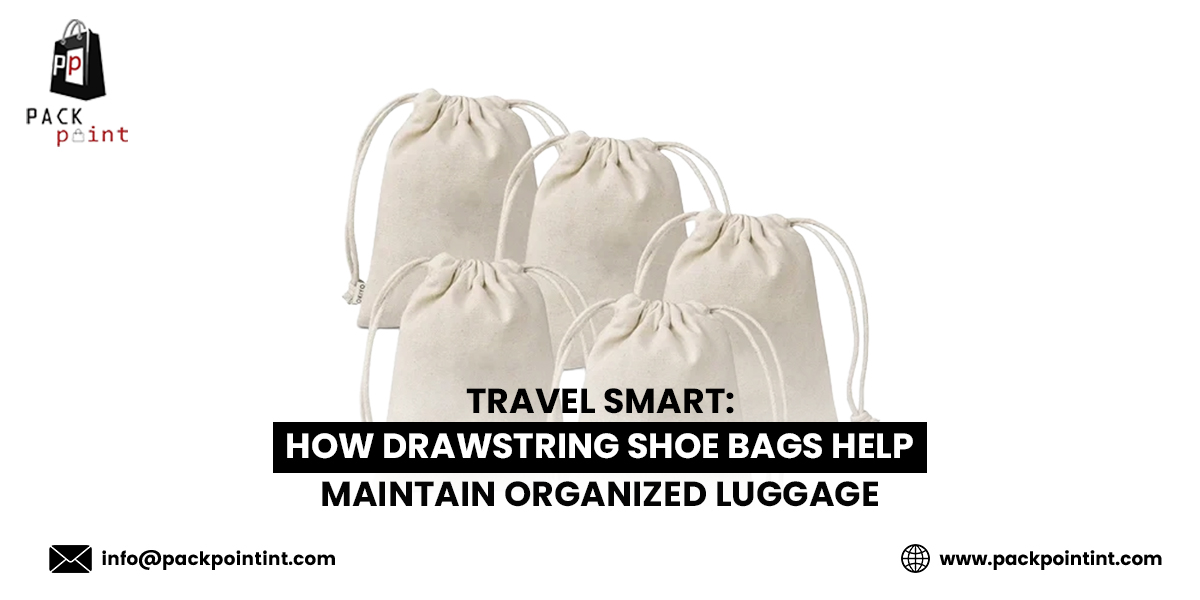Ever wonder how those trendy, stylish, and eco-friendly customized canvas bags come to life? It’s not magic—though it might seem like it! The process is a fun blend of creativity, craftsmanship, and personalization, turning simple fabric into a functional masterpiece. Whether you’re looking to show off your brand, make a fashion statement, or just want a super cool bag, here’s a peek into how your customized canvas bag goes from concept to creation!
Table of Contents
Toggle1. The Inception Of The Concept
Every great bag starts with an idea. Brands want to spread the word about their business or design custom bags for businesses that reflect their unique style.
Whatever the inspiration, the concept is where the magic begins. A few key considerations are:
● Target Audience
Who will use the bag? What are their needs in terms of size, style, and functionality?
● Design Elements
What kind of visuals will be on the bag? Will it feature a logo, slogan, intricate artwork, or a minimalist design?
● Budget
The cost of materials, printing methods, and customization options are crucial to deciding the final product.
2. Choosing the Canvas Material
Next up: choosing the canvas. This is the part where function meets style. Canvas is popular because it’s durable, sustainable, and looks good with just about anything.
There are different types of canvas, depending on what you’re after:
There are different grades of canvas fabric, including:
● Plain Canvas
It is known for its smooth texture and is excellent for detailed prints.
● Recycled Canvas
An eco-conscious choice made from recycled cotton or other fibers.
● Waxed Canvas
Its water-resistant finish makes it ideal for outdoor or all-weather use.
3. Pattern Design and Cutting
Once the material is selected, it’s time to translate the bag’s design into a pattern. A pattern is a template for cutting out the various parts of the bag, including the front, back, sides, and straps. The pattern determines the bag’s shape, size, and style (tote, crossbody, drawstring, etc.).
Expert craftsmen or advanced machinery cut the fabric into precise pieces based on the pattern. Accuracy is crucial here, as even a minor miscalculation can affect the final product’s dimensions and fit.
4. Sewing and Assembly
The cut pieces of canvas are then sewn together to form the basic structure of the bag. This stage involves:
- The front and back panels are stitched up.
- The straps (or handles) are added—hello, functional fashion!
- Double stitching ensures it can handle whatever life throws in (or into) it, from gym gear to groceries.
Some customized bags also feature additional elements like zippers, pockets, or lining for added functionality.
5. Printing and Customization
Here’s where the fun kicks in—making it yours! There are a few ways to add that personal flair to your canvas bag:
● Screen Printing
This is the most popular method for canvas bags. Ink is applied to the fabric through a mesh screen. It’s ideal for large, bold designs and for limited color ranges.
● Heat Transfer
Heat transfers involve printing the design onto a special paper and then transferring heat and pressure onto the fabric. This is useful for more intricate designs or photos.
● Embroidery
Embroidery stitches the design directly onto the fabric for a premium feel, giving the bag texture and a personal touch.
● Digital Printing
This method uses inkjet technology to print designs directly onto the fabric, allowing unlimited colors and complex patterns.
Before large-scale production, a sample bag is often created to test the print quality and ensure the design looks exactly as expected.
6. Quality Control and Inspection
Quality control is vital to ensure the final product meets all expectations. This stage involves:
● Checking seams and stitching
Ensuring all seams are tight and that stitching is even and durable.
● Design Inspection
Verifying that the design has been printed accurately and aligns with the mockup.
● Load Testing
Some manufacturers test the bag’s strength by adding weight to ensure it can withstand daily use without tearing.
Bags that meet the quality standards proceed to packaging, while those that don’t are either repaired or discarded.
7. Packaging and Delivery
Once the bags have passed the quality inspection, they are packaged for delivery. Packaging varies depending on the client’s needs, but it often includes eco-friendly wrapping materials to make the bags more sustainable.
Bags may be delivered in bulk for larger orders, especially for businesses. On the other hand, individual customers receive customized bags in protective packaging, ready to be used or gifted.
8. The Final Product: A Blend of Style and Functionality
This detailed process results in a customized canvas bag that’s functional, stylish, and sustainable. Whether used for shopping, as a promotional tool, or as a personalized gift, each bag tells its own story, from the initial concept to the final creation.
Conclusive Thoughts
The journey from concept to creation in a customized canvas bag is more than a manufacturing process—a personalized experience combining creativity and style. Whether you’re flaunting your design on a casual day out or handing them out as part of a brand campaign, these bags pack practicality and personality in one durable, eco-friendly package!
So, next time you carry a canvas bag, remember that it’s not just an accessory—it’s the result of a thoughtful and intricate process.














